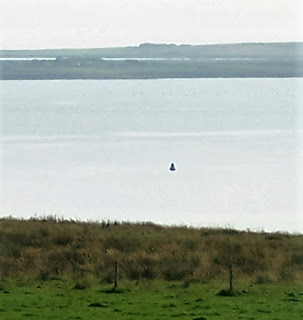 Fortunately for this, my last excursion of the cruise, I was
going on an afternoon trip. In the morning the rain bucketed down.
Fortunately for this, my last excursion of the cruise, I was
going on an afternoon trip. In the morning the rain bucketed down.
Unfortunately, the sea was very rough and we were anchored
in the bay. This means being taken across the waves by tender to Portree. There
were several problems with this. There are only two docking spaces in the port.
At midday people were returning to the ship for lunch. This meant long queues
are the tenders were offloaded, then re-loaded them with people returning to
the ship. On the ship itself, people who wanted to stroll around Portree were boarded
onto the same tenders as those of us on excursions. It would have made life
easier if the strollers waited until the excursionists had been ferried across.
We eventually reached Portree half-an-hour late for the
excursion and I suspect we missed out a photo stop. Nevertheless....
I loved the tour despite the grey skies and gale force wind.
The rugged terrain backed by the mountains made for
wonderful vistas. So many shades of green from the grass to the shrubs and
trees interspersed with the 'bonny' purple heather and backed by granite
mountains. The first stop was to see the Old Man of Storr. Not a venerable old
gentleman but a very large single slab of rock overlooking the surrounding
land.
The next stop was at Kilt Rock - so called because of its
'pleats'. Stupendous views all around and a waterfall dancing down the cliff
face to the sea.
Flora is buried in the cemetery at Kilmuir and her grave is
marked by a very tall monument. Even though I have problems walking uphill I
was determined to go to the monument. The biggest problem once up there was the
wind which made it very difficult to hold the camera still.
Our guide, John Mackay was excellent. As he is also a singer
we were treated to a couple of Scottish songs, one of them being in Gaelic. And
he was proudly wearing his kilt. To be honest, listening to his soft Highland
accent reminded me of my Scottish granddad who came from Aberdeen.
It was, despite the weather, a lovely afternoon out.
 |
| Oriana anchored off Portree |














































